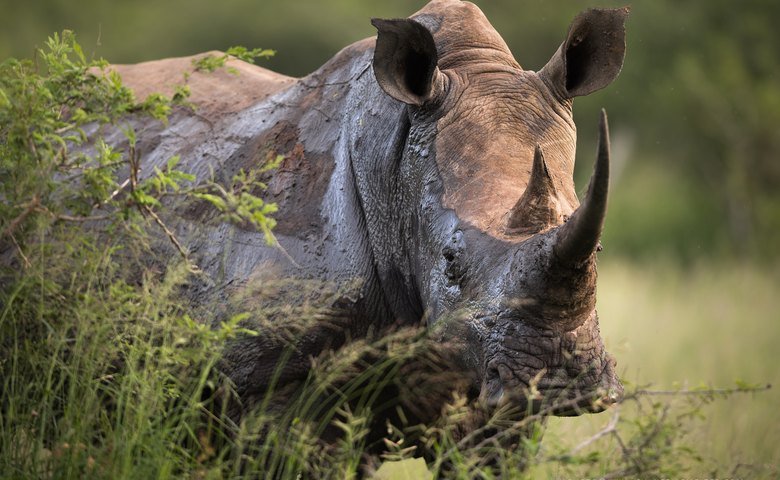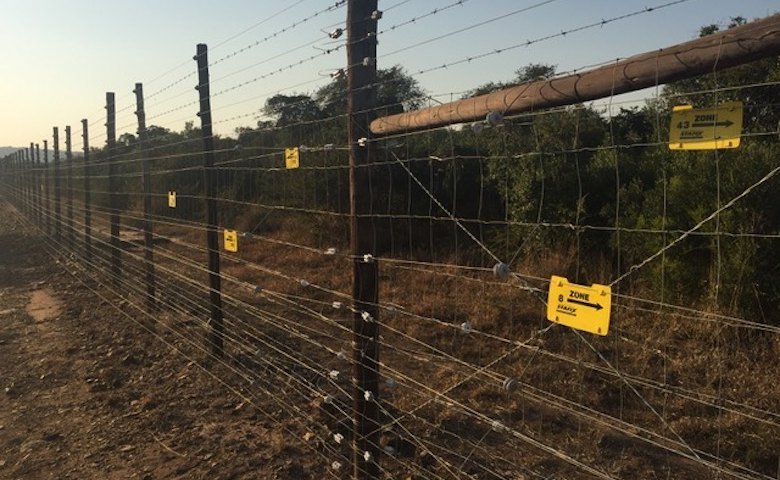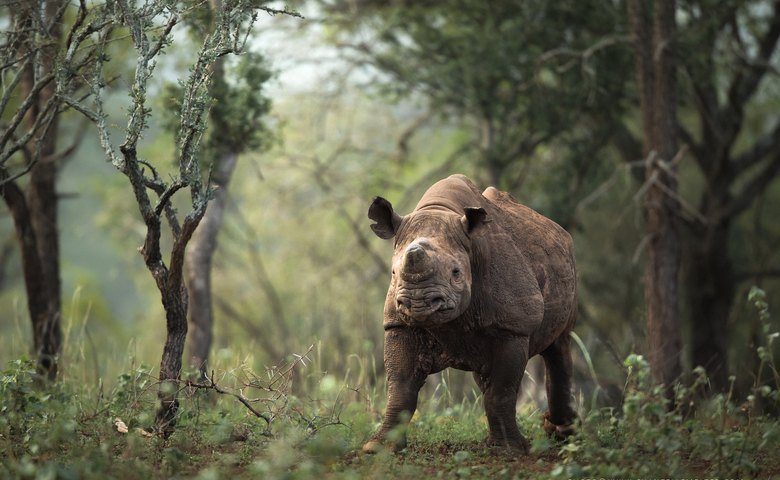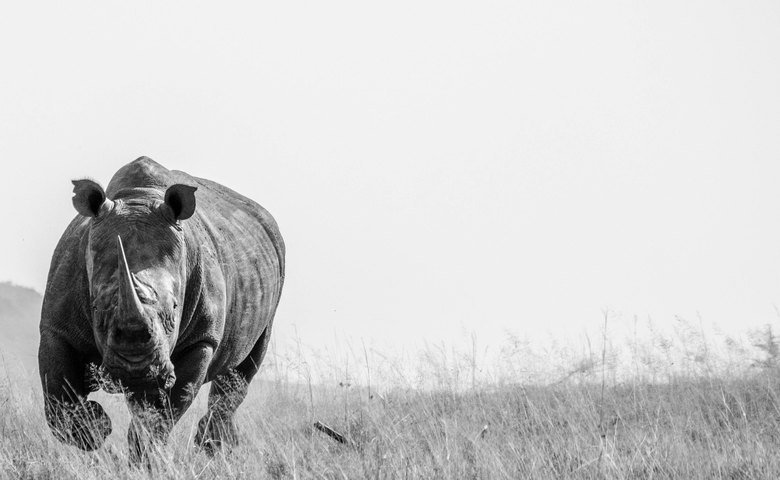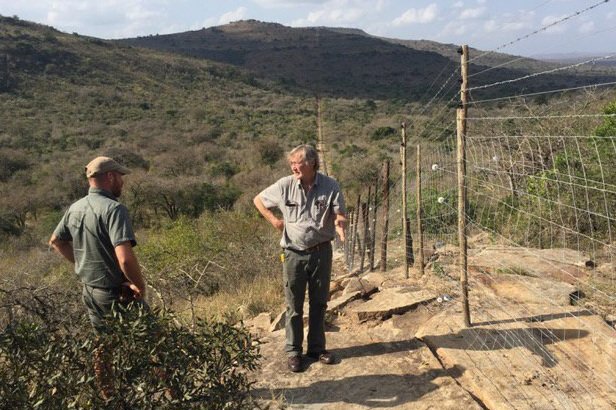
Tech for Parks:
Smart Fence
Global Conservation is funding the construction of a Smart Fence in South Africa’s Hluhluwe-iMfolozi Park (HiP), a rhino conservation hotspot and the oldest proclaimed game reserve in Africa.
The new fence will detect and deter rhino poachers, protecting HiP’s wildlife and keeping rangers safer.
HiP is often referred to as the “birthplace of rhino”, as HiP’s southern white rhino population saved the species from the brink of extinction almost 70 years ago. Since then, more than 3,500 white rhino have been relocated from the HiP area to restock other parts of Africa. Most white rhinos alive today originated from that remnant population. The park now contains the largest population of white rhino in the world and is also playing an important role in growing South Africa’s endangered black rhino population. South Africa has about 17,000 white rhinos in total, estimated to be 80% of the world’s population. The country also has 2,000 black rhinos, about 40% of the world’s population.
To protect this important rhino population, HiP, which is managed by Ezemvelo KZN Wildlife, has partnered with Wildlife ACT to construct a Smart Fence with funding from Global Conservation and the Wildlife Conservation Network. The Smart Fence detects any incursions or tampering along its length, and any attempt to infiltrate the fence triggers an automatic alert at Ezemvelo’s control center. A rapid response team is then mobilized, allowing rangers to intervene and confront poachers before a rhino is killed.
“The fence has electrics both inside and outside its length and any tampering or cutting of the fence sends us an immediate message, pinpointing the location of the tamper. Two sections of fence have been upgraded to date and we have already seen a shift in rhino poaching activity away from both areas to sites where there is no detection fence,” said Dennis Kelly, Section Ranger, Makhamisa.
Not only does the new fence allow the more efficient allocation of scarce resources, it also puts anti-poaching staff one step ahead of rhino poachers, protecting both wildlife and the rangers who put their lives on the line each day.
Ezemvelo are upgrading the fence in stages, prioritizing those areas with heavy poaching pressure. HiP has a large wilderness area with no roads, making it difficult for law enforcement to patrol some parts of the park.Another key technology that anti-poaching teams at HiP are using in conjunction with the Smart Fence is cellular trailcams. These camera traps can detect poachers and automatically send an alert to the Operations Center, allowing rangers to respond rapidly. On March 6, 2020, one of these infrared cameras detected three armed poaching suspects, and alerted the anti-poaching team to the number of people, the location, and the direction of the infiltration. The suspects were challenged, and the rapid response team was forced to defend itself, resulting in the death of two of the poachers.
In August, environment minister Barbara Creecy announced that the number of rhinos killed by poachers in South Africa had fallen by more than 50% from the previous year. However, 166 rhinos were still slaughtered. The reduction is thought to be just temporary relief that was caused by the COVID-19 lockdown, and as the country opens once again, experts warn that rhino poaching may surge once again.
“We realize that as the country opens up, we need to up our game to address the possible threat of poaching,” Albi Modise, spokesman for the Department of Environment, Forestry and Fisheries, told the Associated Press.
HiP’s Smart Fence is a promising way to redouble anti-poaching efforts in an effort to protect one of Earth’s most endangered mammals. This technology is just the first step in creating a “Smart Park” that will be key to combating poaching in HiP.
“With shrinking budgets for conservation efforts, and already limited resources being shifted to address other needs during the COVID-19 Pandemic, it is extremely valuable to use technology to make existing operations more efficient. Wildlife ACT is proud to be working with Ezemvelo KZN Wildlife on this groundbreaking initiative in the province, helping to proactively protect not only these key rhino populations but also support the field teams in their work,” said Mark Gerrard, Managing Director of Wildlife ACT.

